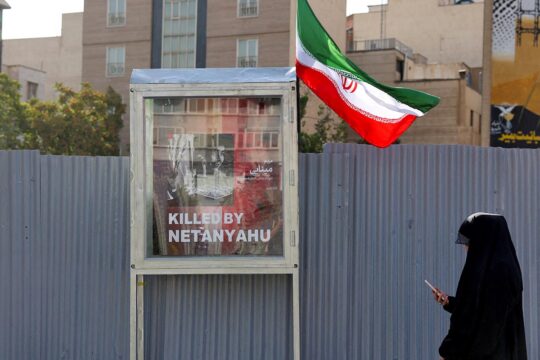Their hostages called them the "Beatles" because of their British accents.
And within the ranks of the Islamic State group the four-man kidnapping cell, two members of which appeared in a US court by videolink on Wednesday, also enjoyed a grim sort of notoriety.
"The cell was infamous, even inside ISIS, for their cruel and harsh methods. There seemed to be no bounds to their sadistic methods, including crucifixion, waterboarding and tormenting their hostages with mock executions," Anne Speckhard and Ardian Shajkovci of the International Center for the Study of Violent Extremism in Washington said in a report.
- War crimes -
There was no apparent physical resemblance between the two dishevelled men with thick beards flown to the US from Iraq on Wednesday and their pop namesakes.
Alexanda Kotey, 36, ("Ringo" to the hostages) and El Shafee Elsheikh, 32, ("George") are accused of conspiring to murder four American hostages.
They are also suspected of involvement in the beheading of two Britons, Alan Henning and David Haines, and several other hostages including two Japanese nationals.
The cell's alleged ringleader Mohamed Emwazi, a Londoner nicknamed "Jihadi John" after appearing in several beheading videos, was killed in a US airstrike in Syria in November 2015.
A fourth "Beatle", Aine Davis ("Paul" to the hostages) is imprisoned in Turkey.
Some of the crimes committed by the quartet amount to war crimes, Tanya Mehra, a researcher at the International Center for Counter-Terrorism in The Hague said, citing "hostage-taking, torture, rape and beheadings".
For former journalist Nicolas Henin, who was held hostage by IS for 10 months, along with three other French journalists, tagging their jailers with nicknames was a way of boosting morale.
He credits British journalist John Cantlie, who was captured in 2012 along with slain US reporter James Foley and who is still missing in Syria, of coming up with the pop epithet for the British guards.
"It was a way of shattering their anonymity, of ridiculing them," he said.
Henin describes the Britons as arrogant men who considered themselves to be the elite forces of IS's self-proclaimed caliphate and showed "astonishing detachment with regard to violence",
Fellow former captive Didier Francois, a reporter with France's Europe 1 radio, spoke after his release of being subjected to several mock executions.
- 'Badass mystique' -
For Dan Byman, a professor at Georgetown University in Washington and researcher on terrorism, the grisly but slick beheading videos in which Jihadi John and other Western radicals played a starring role, served as a powerful recruitment tool for IS.
"They represented a 'badass' mystique that motivated at least some individuals to join the group," he told AFP.
But while the "Beatles" are believed to have had links to late IS leader Abu Bakr al-Baghdadi and the group's spokesman Abu Mohamed al-Adnani, they were "not particularly senior", Byman added.
Acting as a propagandist was one of the best ways for foreign fighters to rise up the ranks of IS, said Pierre Conesa, a former senior French defence official who has written extensively on terrorism.
"It was a good way of differentiating yourself from the regular foot soldier," he said, noting the strong appeal of the group's multilingual videos among radicalised youth particularly.
Welcoming the transfer of Kotey and Elsheikh to the US, Mike Haines, brother of British aid worker David Haines who was killed by the "Beatles" in 2014, said the three years since they were captured had been "a long horrible waiting game".
"These men had only one aim and that was to spread hatred. They took the lives of innocent people. But I have faith in the justice system," he said.


